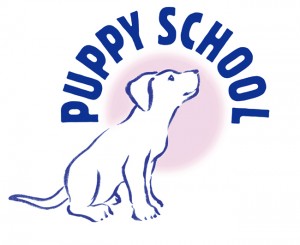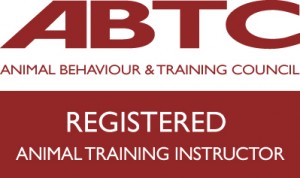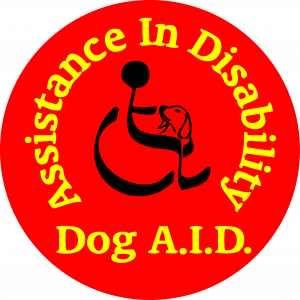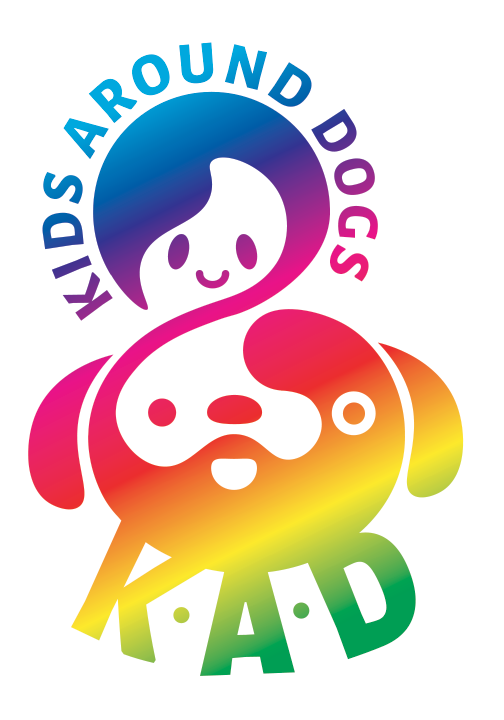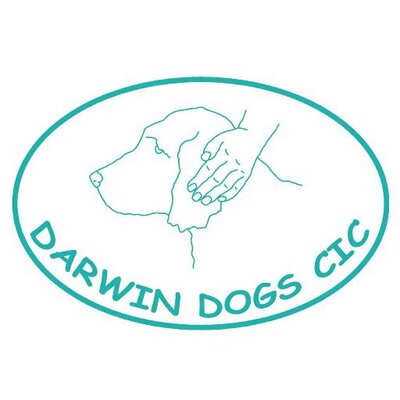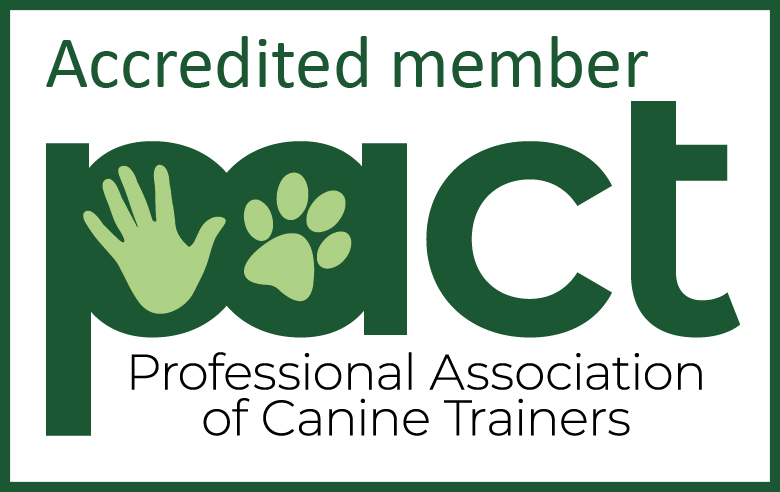Easy Read
Blue & Yellow
Yellow & Black
Black & White
White & Black
X Large version
Terms and Conditions
South Coast Dog Training School and Puppy School Terms
By making a booking, you acknowledge that you have read, understood and fully accept our terms and conditions as detailed below:
Bookings:
• It is the client’s responsibility to ensure they attend on the correct date, time and place for the classes according to the tutor’s instructions.
• Booking confirms your attendance for the six week course. Please make every effort to attend each week. If you are unable to attend, please let your tutor know as soon as possible.
Fees and Prices:
• The full course fee must be paid in advance of joining the class by a method acceptable to South Coast Dog Training School/Puppy School. Failure to pay in a timely fashion may result in your place on the course being given to another client.
• Price advertised at time of booking applies.
Training Class Attendance:
• Our courses consist of 6 weekly classes, rather than a roll-on, roll-off programme or random attendance. For optimum results, we hope that you will attend all the classes and complete the course.
• To make the most of the classes and achieve optimal results, many short daily training sessions at home are favourable to allow you and your puppy/dog to practice the techniques and lessons prior to the next class.
• Puppies must be vaccinated. Your vet will advise when it is safe for your puppy to attend. If you are unsure about vaccinations please consult your vet directly. This is for the safety of your puppy and therefore no exceptions can be made. It is your responsibility to have your puppy vaccinated. (NB: We do not consider homeopathic nosodes an acceptable alternative to conventional vaccines for young puppies.)
• Only puppies under the age of 20 weeks for Puppy School courses on the start date of the course will be accepted.
• Occasionally, we may find that a class environment does not suit a puppy/dog or owner. Full discussion over the best way to proceed will be undertaken and this may result in us making alternative arrangements to assist you.
• We encourage older children to attend our classes as we consider this to be in the best interest of all puppies attending. However, we cannot guarantee their presence at every class for the purposes of socialising the puppies present.
• All children must be under the supervision of a responsible adult who must agree to prevent them from disturbing the process of learning during the class. Tutors reserve the right to ask disruptive children not to attend future classes.
• Although we make every effort to allow your puppy to play with other suitable puppies in the class for short periods, we cannot guarantee the right mix of puppies on every course for this to be done safely. Consequently, puppy play may not occur in all classes.
• We make every effort to ensure the safety of both clients and puppies/dogs during the classes.
• Missed classes cannot usually be taken by joining another group run by the tutor at the appropriate time as there may not be spare places and it is disruptive to the other group to have an unfamiliar puppy/dog join part-way through the course.
• The South Coast Dog Training School /Puppy School method of training relies heavily on rewards with food treats. Although we will have some treats available at the class, it is important to bring with you a supply of tasty, smelly food treats that your puppy will work for.
Training Class / Premises Rules:
• All puppies/dogs must remain on lead and kept away from contact with other puppies/dogs within the premises unless specifically instructed by the tutor.
• All instances of accident or injury must be reported to the tutor at the time they occurred.
• Flexi leads are not permitted in class to avoid injury to others.
• Head collars are not permitted in class to avoid injury to the puppy’s/dogs neck and to avoid distraction during training.
• The following items are NOT PERMITTED in South Coast Dog Training School/Puppy School classes under any circumstances: choker chains and/or check chains of any description; electronic training collars including citronella; any other device that causes discomfort, pain or fear to the puppy/dog; prong or pinch collars; any equipment that the trainer deems unacceptable.
• The use of physical force and punishment-based training techniques are not permitted in South Coast Dog Training School /Puppy School classes.
Refunds and Cancellations:
• Because we operate our classes using a very low tutor : puppy/dog ratio, refunds may not be given for any cancellations unless the place can be filled by another client or unless at least 14 DAYS NOTICE is given. There are no exceptions. We may be able to transfer or defer your place to another course but this is at the discretion of the South Coast Dog Training School/Puppy School tutor and dependent on the age of your puppy at the start of the next available course. Failure to notify us of a cancellation within this time frame will result in no refund.
• Failure to attend a course that you have booked a place on, but not yet paid for, will result in a request for full payment, which you agree to be liable for.
• There will be no refund for cancellations due to lack of vaccination or no vaccination card, unless we are notified 14 days in advance of the course commencing. It is your responsibility to have your puppy fully vaccinated and health warranted.
• There will be no partial refunds for missed classes.
• If a class has to be cancelled due to extraordinary circumstances beyond our control, a refund will not automatically be given but every effort will be made to rearrange a replacement class on an alternative day.
• All other cancellation and refund requests are at the discretion of the South Coast Dog Training School /Puppy School tutor and dependent on individual circumstances.
Life vs Treat - No Competition.
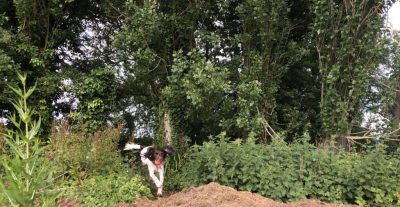
A treat is never going to be more appealing than the stalk/chase/kill/retrieve of anything your dog sees as prey.
Please stop thinking the treat is what is encouraging your dog to make the choices we want from them. Trained well, the ‘lure’ (the part where we guide them using the treat) is replaced with a hand signal very quickly, a reward is then put in for achievement at varying levels.
So how the hell does this force-free training actually work?!?
Well, let’s look at the definition of ‘training’ from Collins Dictionary:
NOUN
1.
a. the process of bringing a person, etc to an agreed standard of proficiency, etc by practice and instruction
And now Practice:
NOUN
1. a usual or customary action or proceeding
it was my practice to rise at six
she made a practice of walking to work
2. repetition or exercise of an activity in order to achieve mastery and fluency
So, it’s not necessarily the method, (although force-free training is absolutely the best option for many reasons ), it is the act of actually training and practising exercises so you and your dog get it right.
Train in places where you can control outcomes to set yourselves up for success.
If you try and fail, change something, distraction too distracting? Choose something else less interesting- a toy, an empty bowl….
Too close, too far away. Move.
But learn from this.
‘Insanity Is Doing the Same Thing Over and Over Again and Expecting Different Results’ Einstein. Possibly. (Google is unsure!)
You absolutely have to train successful outcomes on more occasions than unsuccessful attempts would occur in the wild.
Example 1:
Your dog finds a dead bird and won’t let go.
You go home and you train ‘give’ using different items (toys, shoes, bread rolls, sponges, apples, hard things, soft things, big things, small things, you get the gist), do it with objects they find, objects they’ve chased (you’ve thrown), which is hardest for them to ‘give’? Why do you think this is? What does this tell you you need to work on next?
Train until that behaviour is solid with each item, in each situation.
Example 2:
Your dog keeps running at people.
Training:
Train recall in the garden and in secure fields using as many distractions as possible, food bowls, toys, snuffle mats, until it is solid. Call once they’ve reached the bowl, call while they are running at the bowl. List reward preference in order from favourite to least favourite.
Same questions as above, why can’t they recall when running at something? How do I set it up differently so they will get this right? Do I need to use a distraction that’s less exciting?
So I guess what I’m trying to say is, it’s the repetition of successful training that gets results, not the single reward but all the rewards that have been before as well. The history to that cue.
On the flip side, the repetition of ‘bad’ behaviour also gets results - the dog just masters things you don’t want them to.... which is where management comes in, but that is a blog for another day.
Louise Yden
Senior Trainer
South Coast Dog Training School
Dog Theft - Reducing Risk
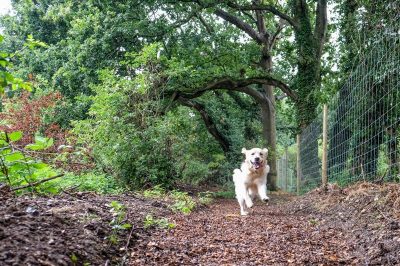
With the rise in demand for dogs and puppies the price of puppies has increased threefold. Consequently, the theft of dogs is rising as well.
Below I’ve outlined some of the steps I will be taking to ensure my dogs, and any in my care, are kept as safe as possible.
Don’t leave them unattended
Dogs are easily stolen from outside shops, cars and gardens. I would seriously reconsider the use of dog doors/flaps. Keep them insight on walks, I.e. don’t let them go around corners ahead of you and really pay attention to them.
Thieves are less likely to steal from a house as the law comes down harder on burglary.
Stop over-socialising puppies
They do not need to say hello to everyone and their mother. They really, really, really don’t. They need to learn manners and recall around people and dogs. You’re the owner, you’re the one we want them to be interested in. They need to say hello to selected people and be under control, not running away from you, while you inevitably call them, for them to have a fuss made over them by a randomer. Every time this happens they learn recall means running up to strangers. Let them say hello to the odd person while they are on a lead.
Vary your walks and times
Varying walks also has the added benefit of being much more exciting and enriching for your dog. Walking in open areas gives you a better view of your dog and anyone lurking around.
Social media location
Don’t post your location on groups or public accounts. The thieves are using social media to target individual dogs.
Recall
Train recall when your dog is running towards people and dogs. Have them on a long line until you’ve nailed it. Think stranger danger.
Over the last few days, I’ve had dogs follow me around because I’ve had picnic food inside a bag and 2 dogs basically get in my car. This isn’t cute or funny, it’s dangerous. You wouldn’t let your child do it - stranger danger people!
Identification
Tags and microchips are law, if your dog is stolen and then dumped somewhere you're more likely to get them back.
None of these steps will guarantee your dogs safety but we want to make it as hard as possible. The more layers of security we have the better.
Achieving Stress Free Walks
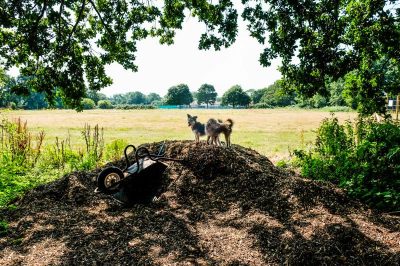
I’ve been thinking of writing this post for a while, we are getting an increasing amount of enquiries about dogs running up to other people or dogs and their recall failing.
You need to know that walking a dog isn’t relaxing for the first year or two.
What drives your dog, what food/toy/game will they do anything for?
My dogs remain on the lead until I’m confident we are far enough away from roads/livestock/tractors that they are safe, even if their recall failed. Then I ask them to sit, unclip their lead and release them with ‘off you go’. When we’re out I spend my time watching my dog and watching the environment.
What I’m looking for when watching them:
- That they stay within the distance I trust they will successfully recall in. If they go too far they get called back and they are rewarded with food or finding a toy I hid before I called.
- Body language. If they freeze they get called back, if they lower their body (think stalking), tail between legs, ears back - all of these things are telling me something’s up and I want them near me so I have a bit more control. The further away from you, they are the less control you will have. I might decide to put them on the lead for a bit or ask for ‘heel’ or engage them with some training I.e. hunting of toys/middle/touch.
- So I know when they poo. It has to be picked up and it tells you a lot about their health.
What I look for in the environment:
- People. Not everyone likes dogs. There are a lot of people out walking right now who don’t own dogs. If I think the dog will run at someone they are called back, rewarded with food, put on the lead. They are fed chicken/ham/cheese while the person passes us. When the person has gone and I’m confident the dog won’t chase after them I let the dog back off. Same way as before, ‘sit’ and ‘off you go’.
If you have got them back before they start to go you have also just prevented another opportunity for them to practise jumping up and you have a successful recall in the bag. The practice of any behaviour (wanted or unwanted) makes perfect. The last thing you want is a dog who has become an expert at running at people/dogs.
2. Dogs. The same as people don't all like dogs. If they are on lead you absolutely have to call your dog back and put them on a lead. You don’t know if the dog is injured/old/reactive etc. If the dog isn’t on lead I may let them say hello, but in a similar manner, I say ‘morning’ to people. I keep walking, the dog will catch up and I’ll reward. If your dog will charge up to the other dog put them on the lead until you can ask if the other dog is friendly. Dogs don’t like being charged at, it's rude. Don’t let your dog practise it.
3. Wildlife/Animals/Bikes. Ideally, I want to see the deer/rabbits/horses before the dog. My recall will be 100 times more likely to work and I won’t have to spend hours retraining it once the dog has been rewarded so highly for ignoring me and chasing an animal or bike. They won't have found out that it's THE BEST fun to chase things. Win.
4. Danger. Poison, farm machinery you get the idea.
5. Corners. ALWAYS call your dog to heel/ put them on lead to go round a corner. You don't have a clue what is there and if anything happens you won't know or be able to help your dog.
Lastly I consider the weather:
- Wind. Trees are loud. Wind is loud. If you shout into the wind you won’t be heard as clearly as on a still day. Wind blows scent everywhere. My dogs are ***** when it’s windy.
- Rain. Cars are louder when the road is wet. Avoid busy roads when walking a puppy in the rain. Smells change, the feel of the ground changes, rain in itself is loud.
- Sun. If it’s really hot my dogs do something that isn’t running around like maniacs or walking on hot tarmac.
Owners need to be present and aware when walking their dogs.
Call them back for a food or toy reward, not because you need to, repeat. And again.
Reward and socially acknowledge them when they come to check-in (when they come to see you because they want to). Set them up to succeed, spot the issue before them. Help them get it right so people like them and you can enjoy walks without worrying they'll embarrass you. Walking a dog is a skill and you will both improve, easy things were always hard, to begin with (driving a car, riding a bike).
Louise Yden

